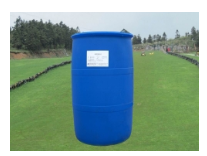With the increasingly prominent environmental problems of chemical surfactants, the application of biosurfactants has attracted more and more attention. In the late 1980s, the development of biosurfactants using bioengineering technology has become a new topic in the field of international bioengineering. In the past 20 years, with the rapid development of modern biotechnology and the application of biosurfactants in oil exploitation, environmental protection, pharmaceutical, food processing and other fields, people have a strong interest in using this technology in the industrial field. The enhancement of global environmental awareness has further promoted the trend of biosurfactants replacing chemical surfactants.

Alkyl glycosides are hygroscopic solids. The pure alkyl glycosides are white powder. Industrial products are light yellow or light yellow due to impurities. Alkyl glycosides are soluble in water, and the product is generally made into 50-70% aqueous solution.
Compared with other surfactants, alkyl glycoside surfactants have the characteristics of low surface tension, strong decontamination, stability in alkaline environment, excellent compounding performance, and low irritation and toxicity to skin. At the same time, due to its preparation of glucose and fatty alcohol, it has good biodegradability and no pollution to the environment. It is widely used in washing, cosmetics, food and other industrial fields. As a new type of green surfactant, in recent years, the research on alkyl glycosides has become one of the active research fields and development focuses.
In recent years, great progress has been made in the study of transglycosylation. For example, alkylglycoside was synthesized by using methylbenzenesulfonic acid as catalyst and trans glycosidization method. The influence factors of different process conditions on the yield of alkylglycoside were investigated. The results showed that the main factor affecting the yield of alkylglycoside was the ratio of catalyst to glucose.
It can be seen that in recent years, the focus of the synthesis of alkyl glycosides by transglycosidization is mainly on the improvement of catalysts and raw materials. There are also relevant reports abroad, such as the United States Patent report to c4-22. The oligoglucoside was synthesized from light colored glucose or hydrolyzed starch and fatty alcohol with partial sulfation products of fatty alcohol as acid catalyst.